It might feel nearly impossible to get your material seen in the midst of frequent changes to social media algorithms and search engine rankings. While organic search is the free and arguably more convenient method, the chances of becoming viral without spending money are slim.
While earned and owned media have their own marketing value, paid social advertising is the most certain approach to drive traffic and sales from the start. As of 2021, 75% of Gen Z-ers and 48% of millennials are impacted by social media advertising.
What is Social Media Advertising?
Social media advertising, also known as social media targeting, is the delivery of adverts to users of social media networks.
User information is used by social networks to provide highly targeted adverts based on interactions inside a certain platform. When the target market matches the user demographics of a social network, social advertising may yield significant gains in conversions and sales at a cheaper cost of acquisition.
Types of Social Media Ads
Advertising on social media is a direct approach to contacting your target demographic. You may target both new and returning clients. As mentioned above, advertising is available on all of the main social networks. That doesn’t imply you should utilize them all.
It’s also helpful to know which networks are popular with your target demographic when deciding where to position your adverts.
Where is your target audience most engaged, focused, and accessible?
Here are some types of social media ads you can consider for your company:
Facebook Ads
Facebook advertisements can help you reach one of three sorts of campaign goals:
- Build brand recognition or broaden your reach.
- Consider sending traffic to your website, increasing interaction, encouraging app installations or video views, generating leads, or encouraging users to contact you via Facebook Messenger.
- Increase sales or leads through your website or app, create data, or attract foot visitors to offline businesses.
Consider the audience: With 2.45 billion monthly active users, Facebook is popular across numerous demographics. Teenagers use Facebook at the same rate as their parents, and elders are swiftly catching up.
With sophisticated targeting possibilities for this massive user base, Facebook is an excellent platform for getting started with social media advertising.
You may utilize advertising to send viewers to your Facebook Page or your website. You may also send them a personalized Instant Experience. This is a full-screen interactive or informational destination page within the Facebook mobile app.
Photo Ads
According to Facebook’s own analytics, a series of photo-only advertisements can generate more unique visitors than other sorts of ad formats.
Facebook photo advertisements offer 90 characters of text and a 25-character headline in addition to a photo. Display and tell! These advertisements may also have a call-to-action button such as Shop Now or Download.
You may construct your photo ad in Facebook Business Manager or just promote a post that includes an image from your Facebook Page.
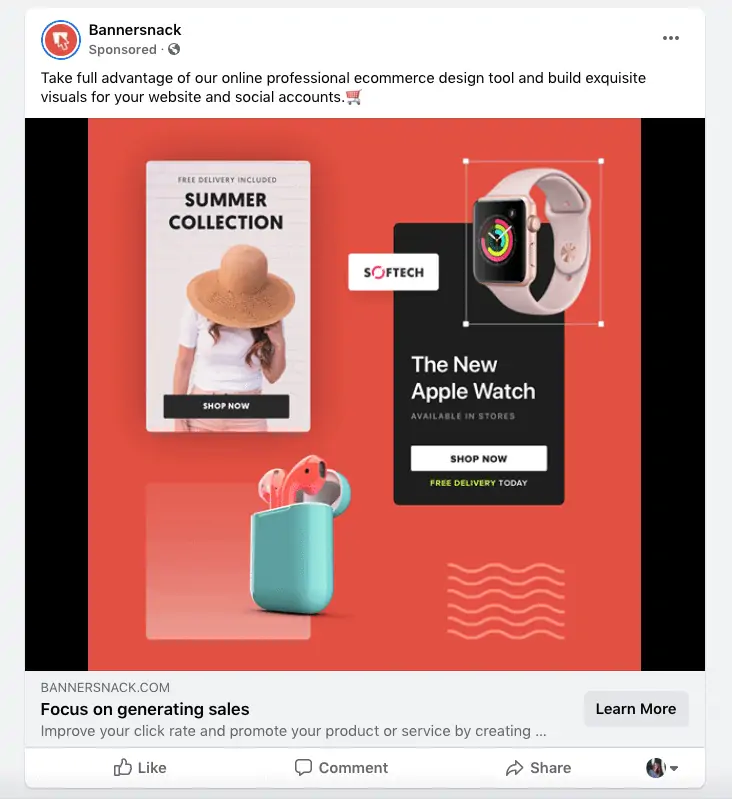
Video Ads
Facebook video ads range from brief, looping video segments that autoplay in users’ newsfeeds to unique 241-minute desktop sponsored films. You may now create video advertisements that play within other videos, as well as share 360-degree films.
With so many alternatives, it’s vital to have clear goals and an understanding of who your target market is and how your video will reach them.
Stories Ads
Photos display for six seconds in this full-screen mode, while films can run up to 15 seconds.
However, you cannot directly choose Facebook Stories advertising on your own. They’re included as a possible placement when you select Automatic Placements when creating your ad for the News Feed or Instagram Stories campaigns.
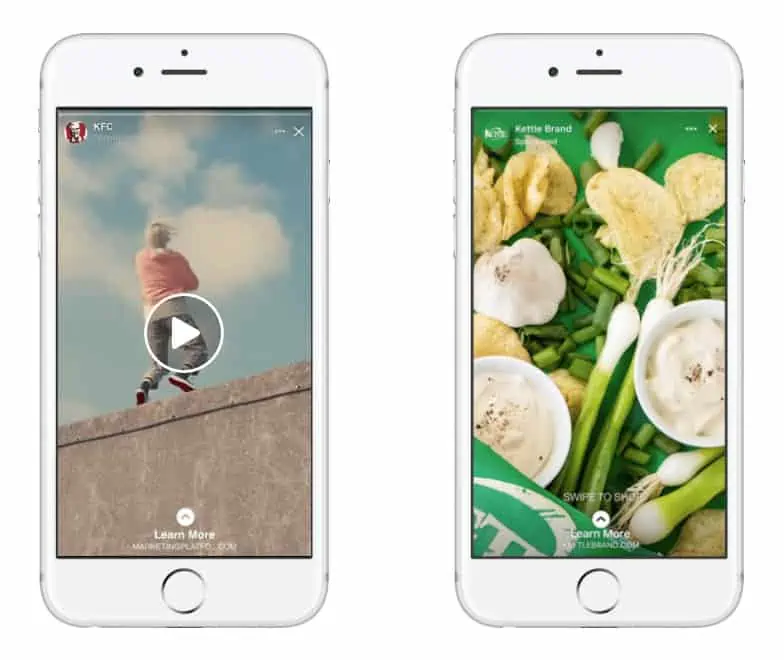
Messenger Ads
Messenger ads are just Facebook advertisements that appear in the Chats tab of the Messenger app. They’ll pop up in between chats. You may use them to initiate an automated discussion with a potential consumer straight on Messenger or to link to your website or app.
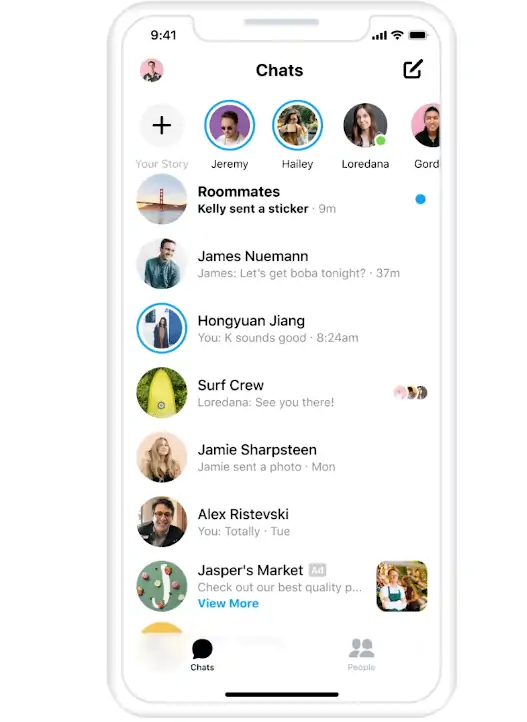
Instagram Ads
Instagram is owned by Facebook. As a result, it’s not unexpected that Instagram advertisements serve the same three major campaign objectives as Facebook ads:
- Awareness
- Consideration
- Conversion
Instagram is particularly popular among millennials. The platform is also popular among Generation Z and Generation X. Custom targeting features, similar to Facebook, allow you to target your ideal audience. Create lookalike audiences by defining your target audience’s behaviors and activities, as well as their interests and demographics.
Photo and Video Ads
Your Instagram photo or video will look like any other Instagram post, except for the word Sponsored in the upper right corner. Depending on the goal of your campaign, you may also be able to include a call-to-action button.
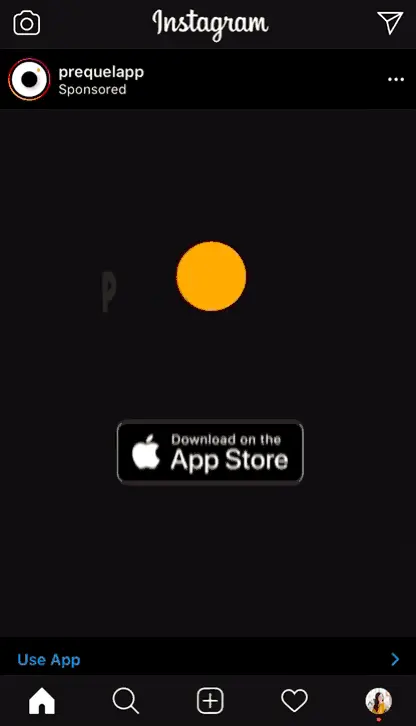
Carousel Ads
Viewers swipe through several photos in an Instagram carousel ad. Make sure the photos in your carousel ad are aesthetically comparable and are linked by a common topic. Swiping through the many photographs in the ad shouldn’t be distracting.
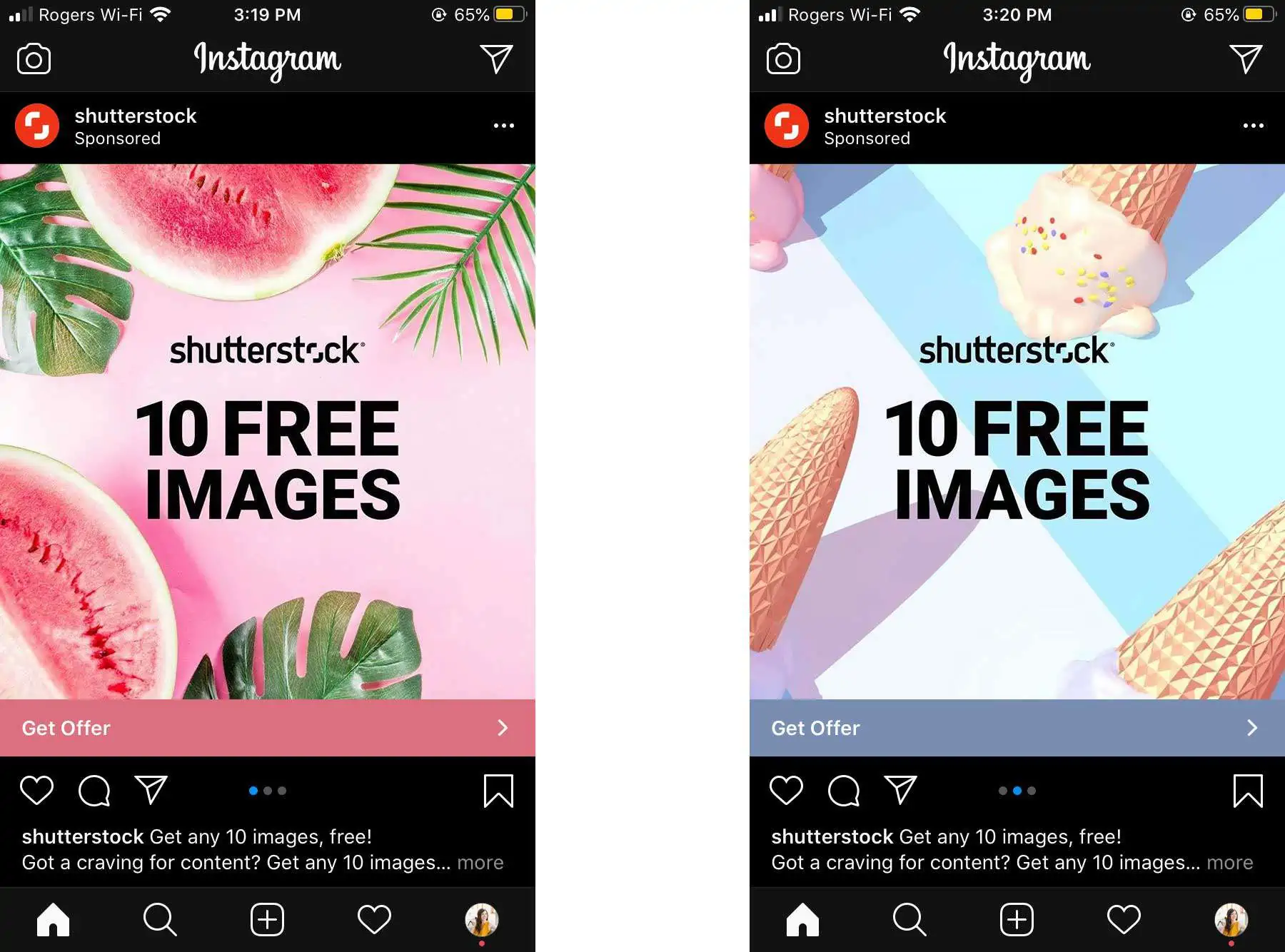
Stories Ads
Instagram Stories advertising may be up to 120 seconds long and can include photographs or videos. These advertisements appear in full-screen mode in between people’s tales. Add interactive features to Story advertising for the greatest results.
IGTV Ads
Users may publish long-form videos on IGTV, a platform inside a platform. This capability was introduced on Instagram in 2018, and you may now display ads in user-created videos as of June 2020.
IGTV video ads will display only once a user has navigated to IGTV from their feed. Ads must be vertical and no longer than 15 seconds.
Twitter Ads
Twitter advertising serves three distinct commercial purposes:
- Awareness: Increase the reach of your advertisement.
- Consideration: Whether you want video views, pre-roll views, app installs, web traffic, engagement, or followers, this is your category.
- Conversion: Bring users to your app or website and encourage them to take action.
Considerations for the target audience: Nearly two-thirds of Twitter’s advertising addressable audience is male.
Twitter allows companies to generate Twitter advertising in two ways:
- Twitter Promote automatically boosts your Tweets. (Please be aware that this service is no longer available to new users.)
- Twitter Ads campaign enables you to create campaigns depending on your marketing objectives.
Twitter Promote
The Twitter algorithm automatically promotes Tweets to your defined audience when you use Twitter Promote. It promotes your first ten organic tweets of the day that pass the Twitter quality screening. It also advertises your account in order to gain more followers.
Twitter Ad Campaigns
With Twitter ad campaigns, you first select a business purpose that corresponds to your overall business objectives.
For example, in this Ritz Crackers advertisement, a video is used to highlight the product, along with a link to easily find out more about crackers.
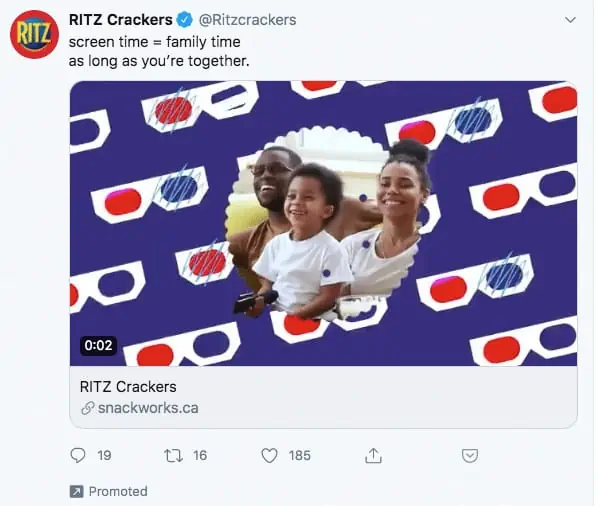
Linkedin Ads
LinkedIn advertisements may help your company achieve three sorts of marketing goals:
- Awareness: Increase the visibility of your organization or brand.
- Consideration: Drive website visits, increase engagement, or encourage video views.
- Conversions: Gather leads and increase website conversions.
Consider the audience: LinkedIn is significantly more business-oriented than the other social networks mentioned in this essay. It provides choices for targeting based on professional criteria such as job title and seniority.
Sponsored Content
Advertisements for sponsored content are displayed in the news stream on both desktop and mobile. They’re utilized to bring your material in front of a wider audience and to highlight your brand’s expertise. Sponsored content advertising on LinkedIn might take the form of single photos, videos, or carousel adverts.
Sponsored InMail
Sponsored InMail is comparable to email marketing in that messages are delivered directly to users’ LinkedIn inboxes. Like having a penfriend! That is what you pay for.
Sponsored InMail, on the other hand, offers an intriguing one-of-a-kind feature. Ad messages are only sent to users who are active on LinkedIn. This prevents messages from becoming stale.
You may either deliver a straight message to your audience or construct a more conversational experience, similar to a choose-your-own-adventure, incredibly basic chatbot.
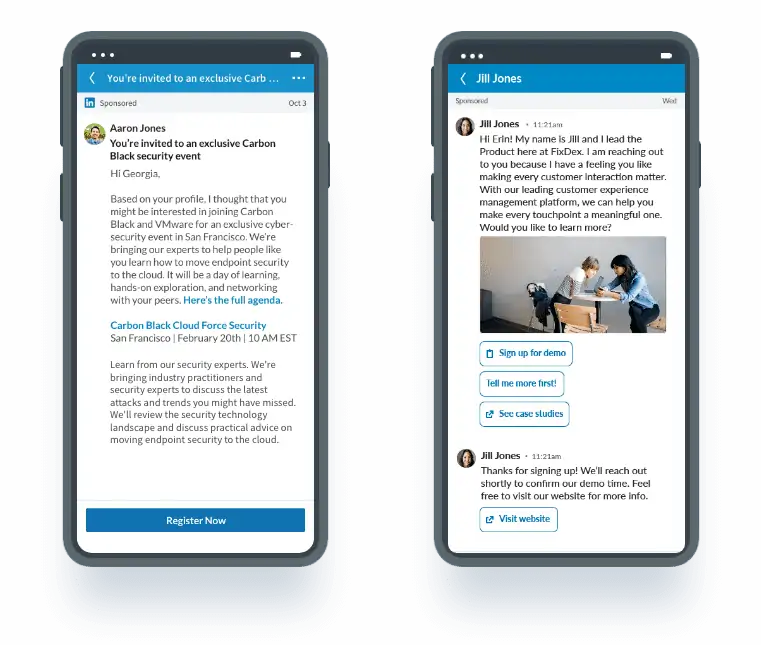
Text Ads
Text ads are tiny advertisement units that display at the top and bottom of the LinkedIn news feed. They are only visible to desktop users and do not display on mobile devices.
Text advertising, despite its name, can incorporate a thumbnail picture of 50 x 50 pixels.
Dynamic Ads
Dynamic ads are dynamically tailored for each of your prospects. Don’t be scared to get down to business! You may urge users to follow you, read your thought leadership pieces, apply for your positions, or download information by contacting them directly.
Social Media Advertising Tips
Know what business objective you’re trying to achieve
It’s no coincidence that we begin each section of this book by discussing the business goals that each sort of social media ad may assist you with. It’s difficult to reach your objectives if you don’t know what they are in the first place.
Understanding your company’s goals is crucial. It guarantees that you promote on the appropriate social network. It assists you in selecting the appropriate advertising solution inside that platform. It even directs your creative approach.
Know Your Target Audience
To get the most out of these targeting choices, know who you’re attempting to reach. This guarantees that you get the most bang for your ad dollar.
After all, advertising to soccer parents in Florida is pointless if your target market is young male video gamers in New Jersey. One of the main advantages of social media advertising is the ability to micro-target your ad campaigns. Creating audience personas might assist you in determining which audience groups to target.
Test Your Ads to Optimize Performance
Instant feedback is one of the major advantages of social advertisements. In minutes, you may assess the success of a sponsored post and follow up with comprehensive analytics data. The ideal technique is to test numerous advertisements with limited audiences to see which ones perform best, then employ the winner in the main campaign.
Measure Results and Report On Them
Measuring success is just as crucial as knowing your goals before executing an ad campaign. This will tell you if you’ve met your objectives. It reveals what worked and what didn’t so you can better in the future.
Measuring your results and having concrete data about the value your ads bring to the company (purchases, leads, and so on) is a key part of proving return on investment (ROI).
3 Benefits of Social Media Advertising
Marketers may use social media advertising to raise brand recognition, engage their audience, and increase conversions. One of the most significant advantages of social media advertising is the ability to target a specific audience. Here are 3 more advantages of social media marketing:
| Benefits | Explanation |
|---|---|
| Reach Qualified Customers | It allows you to run ads to a specific segment of your audience. |
| Boost Conversion Rates | Social media ads that tell users what to expect on the following landing page are proven to increase conversion rates. |
| Innovative Ad Format | Different ad formats support different goals. |
Reach Qualified Customers. You already know who your customers are. Spending a large amount of money on paid advertising is not practical for firms on a tight budget. Although social media is not as cost-effective as some say, it can allow you to target advertisements to a certain demographic segment. You may run advertisements that are only accessible to users who are aware of your brand and simply need a nudge to buy from you using options like bespoke audience or retargeting.
Boost Conversion Rates. Every company strives to improve its conversion rate. To accomplish so, they use a variety of growth tricks. Social media advertising is a certain way to increase conversion rates. Conversion rates have been shown to rise when social media advertising advises visitors on what to anticipate on the next landing page.
Innovative Ad Format. The environment of social media advertising is continuously changing. New targeting options and ad types are added on a regular basis. Carousel advertisements, lead generation ads, canvas ads, and other ad styles were formerly unheard of, but companies today rely heavily on them. Marketers may now experiment and iterate thanks to this innovation. Furthermore, different ad formats assist various objectives. Carousel advertisements, for example, are successful in raising brand recognition, while lead generation ads are effective in determining a lead’s receptiveness.
Conclusion
Social media advertising, particularly in the e-commerce world, is one of the most efficient and successful methods to contact your target audience and convert them into consumers. No other kind of advertising can provide the same level of consistent and scalable leads as social advertising.
As more merchants dip their toes into social media, it’s critical that you learn the ins and outs of the platform and begin to improve your own approach. You’ll be well ahead of the game if you use these strategies and set practical goals to help you through the process.
References
Navigating Social Media Advertising in 2022: How to Choose the Right Platform and Ads for Your Brand
What Are Social Media Ads? Examples & Types of Social Media Advertising
Social Media Advertising 101: How to Get the Most Out of Your Ad Budget